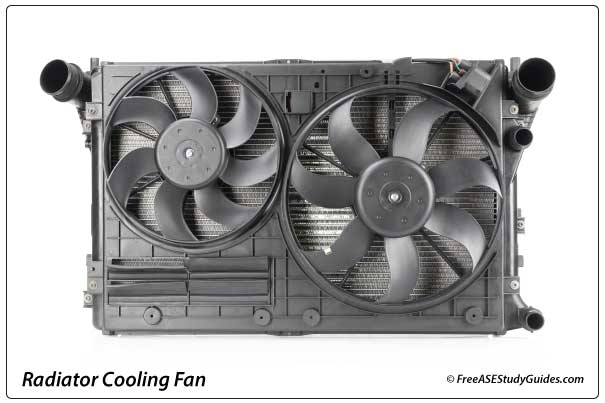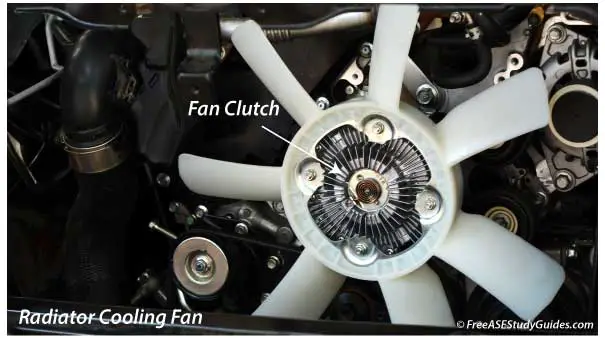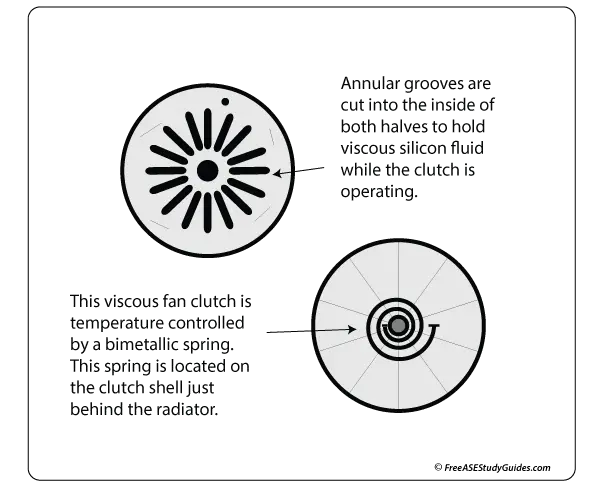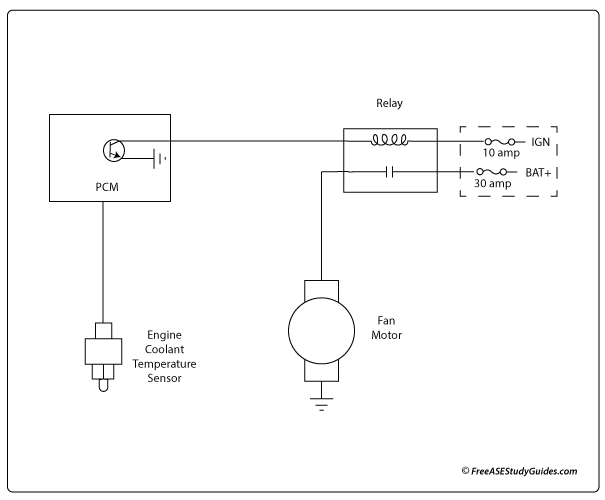Radiator Cooling Fans

The crankshaft or electric motors can drive the radiator cooling fans. They provide airflow through the radiator fins, transferring heat from the engine's coolant to the outside air at slow speeds and idle. Some vehicles have a fan installed before the condenser to exchange heat. The radiator and the condenser require airflow to exchange heat with the atmosphere. This airflow is vital, especially idling, while the vehicle is sitting still and not benefiting ram air.

When mounted to the water pump's flange, bent or missing fan blades will cause an imbalance, damaging the pump's bearings and seals. Always check for cracks and excessive wear in today's plastic fan blades.

Viscous Fans: The crankshaft drives a viscous fan clutch. The typical viscous fan clutch contains silicon oil that can leak from the unit. The viscosity of this thick fluid is measured in CST or centistokes and wears over time. Check the unit for leaks through the seams and around the shaft. A stuck/frozen fan clutch makes a whirling sound that increases with engine speed. Check the accessory belt for wear and glazing.
They also have a thermostatic spring. Check it by releasing it from its seat and measuring the distance between the spring and the retainer. Always check the manufacturer's specifications for special procedures.

Electric Fans: Electric fan blades are typically made of plastic and should be inspected for cracks and wear. The ECM controls fan operation, and an (ECT) or engine coolant temperature sensor senses the temperature of the engine's coolant. The PCM monitors the sensor's voltage signal. It then compares this signal to its internal memory; if the coolant is hot enough, the PCM sends a low current voltage signal to the fan relay. The relay contacts close and complete the fan motor's circuit, activating the fan motor.